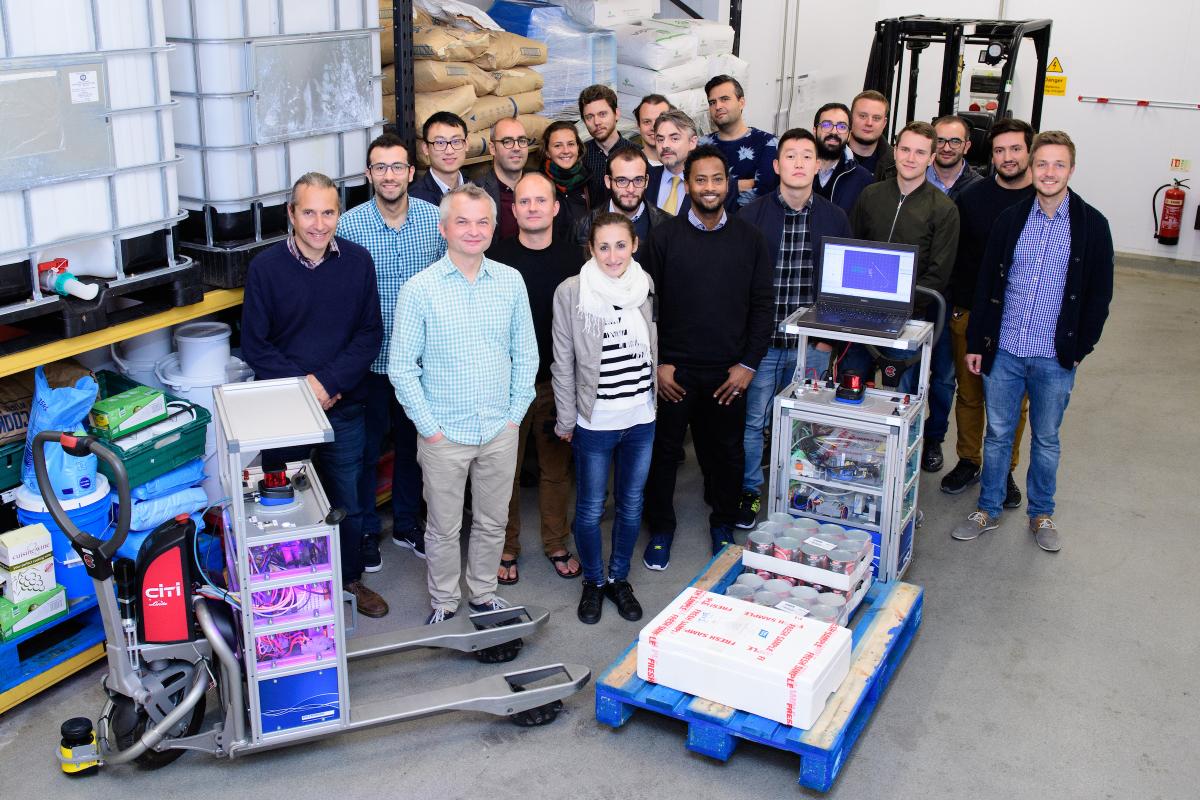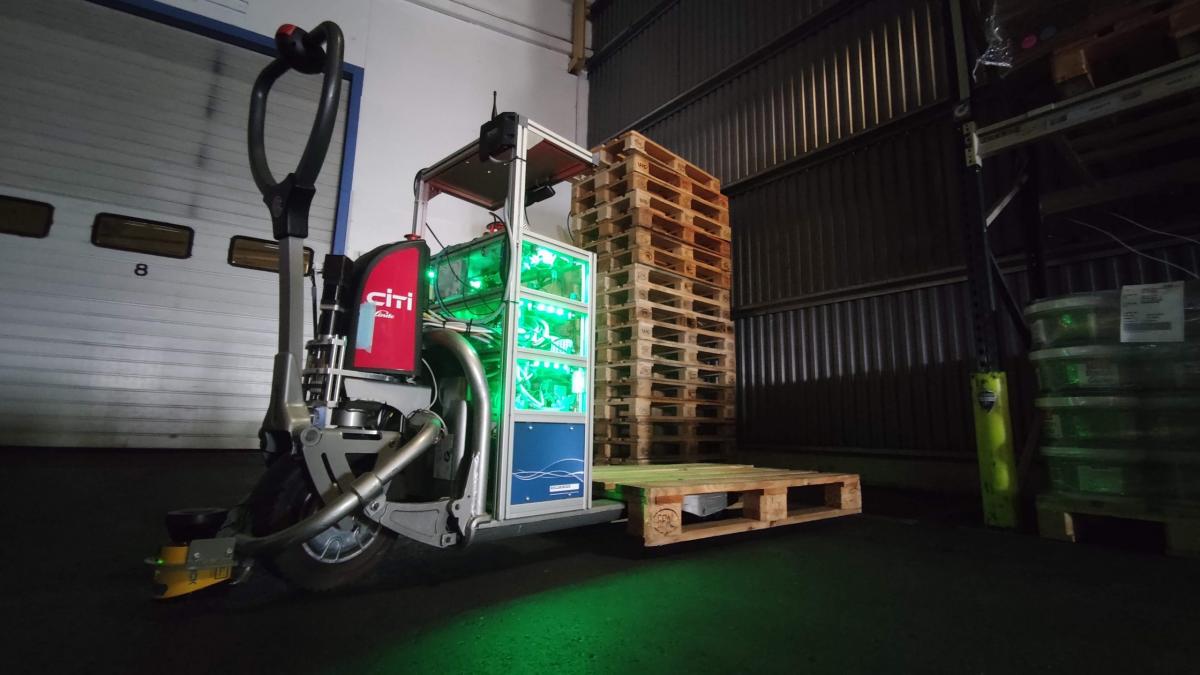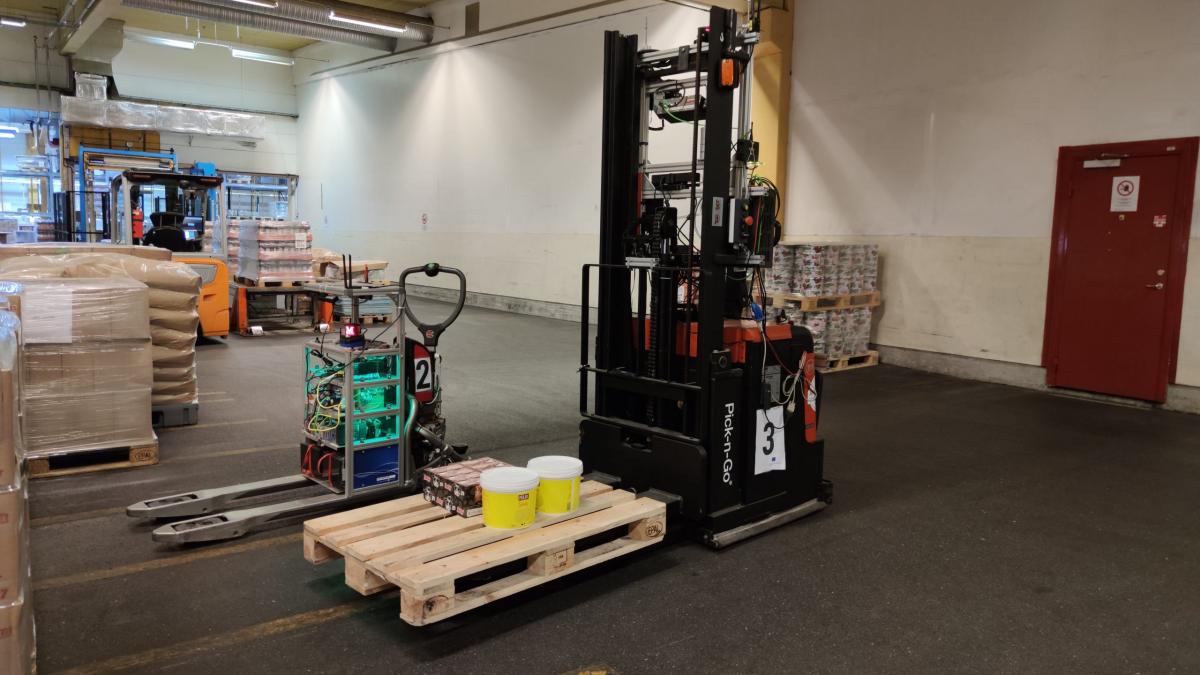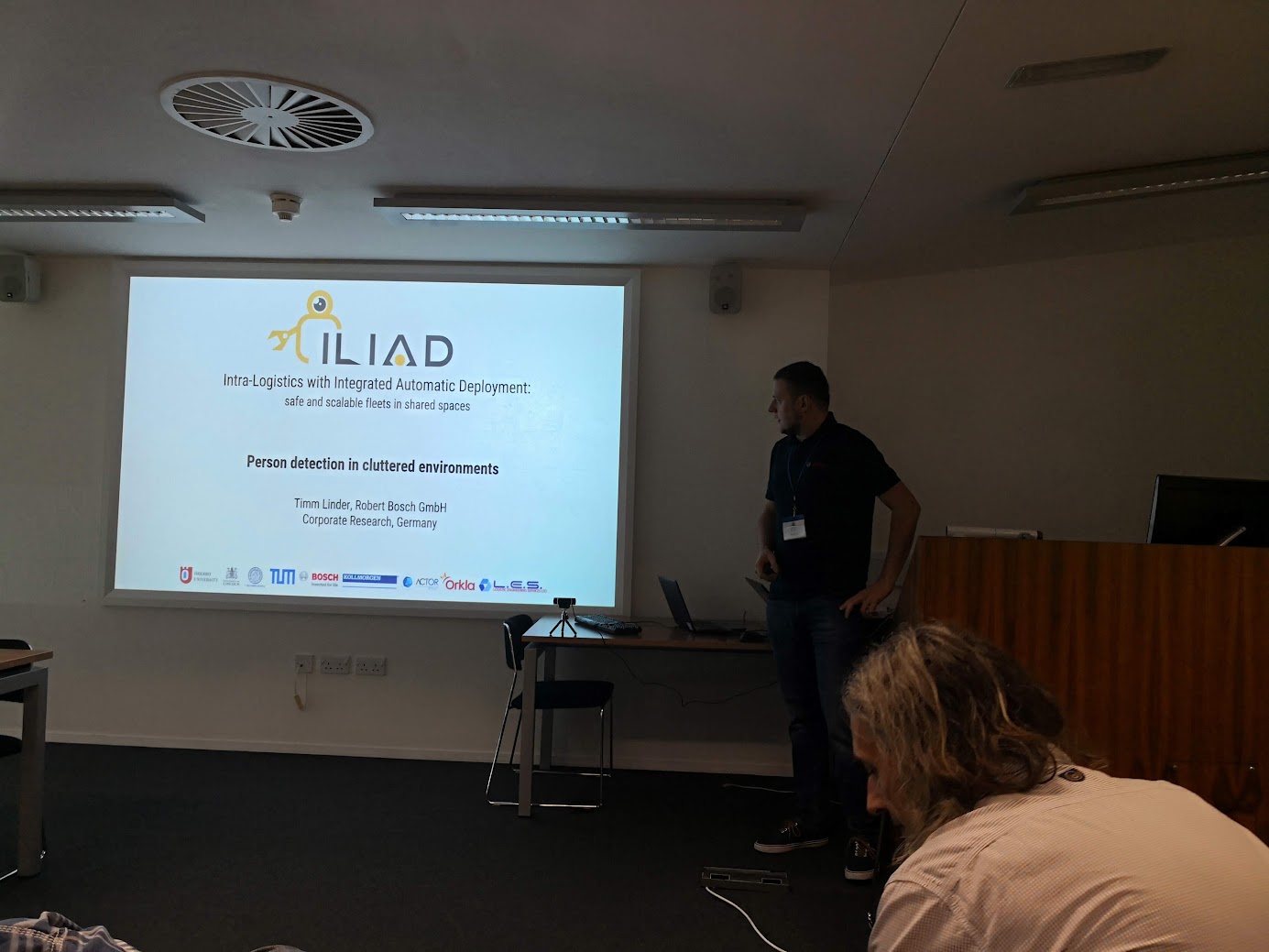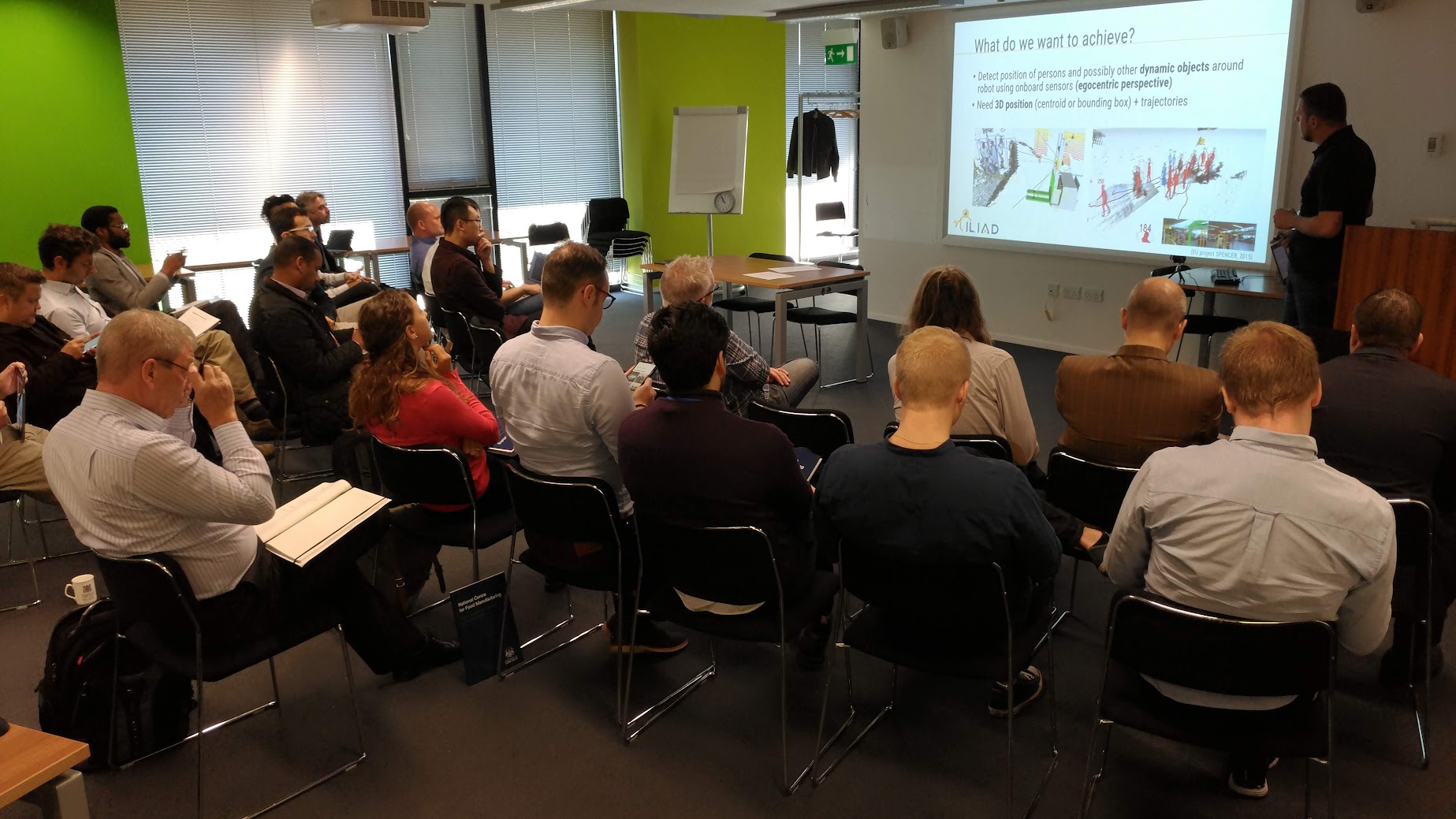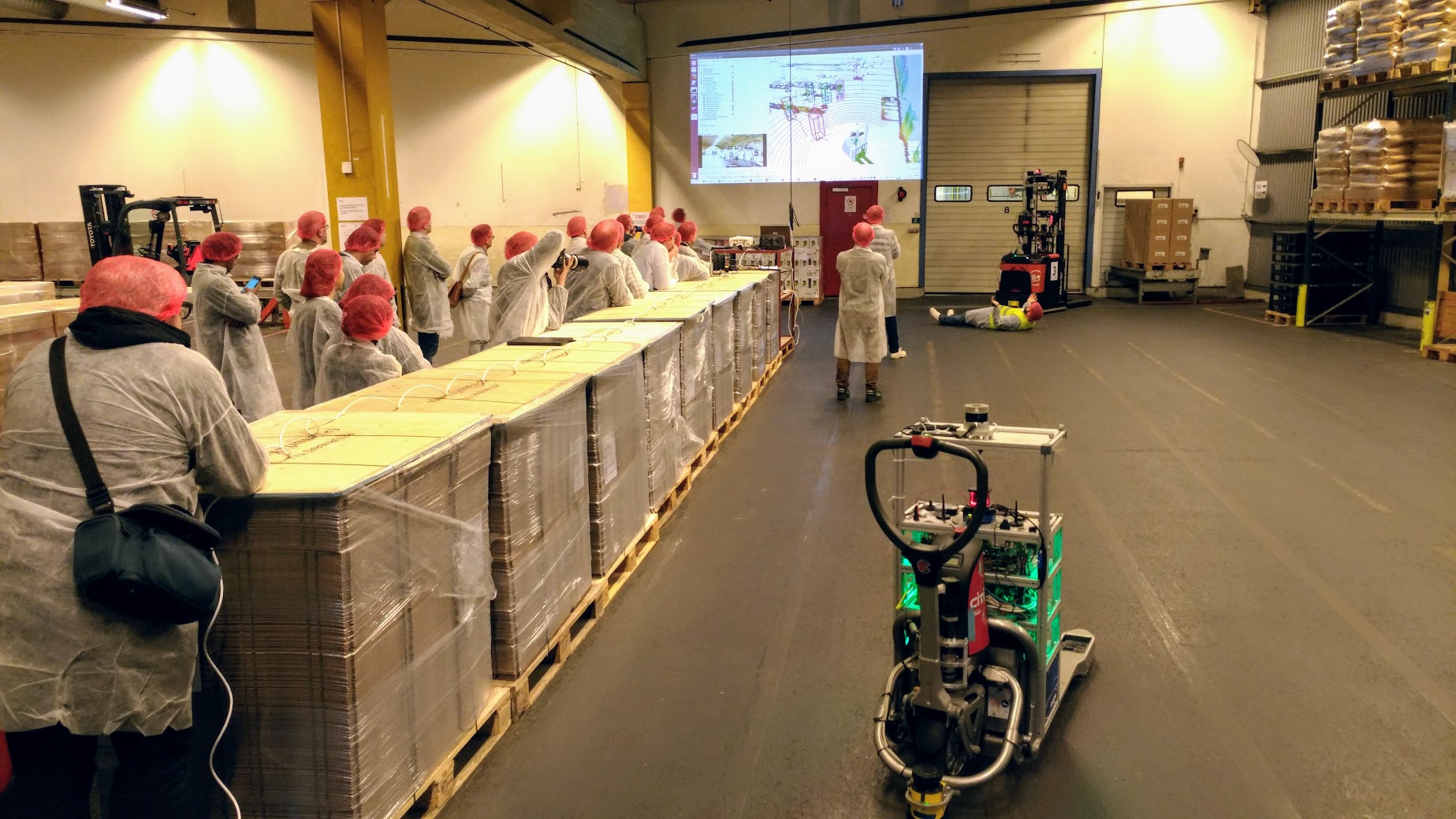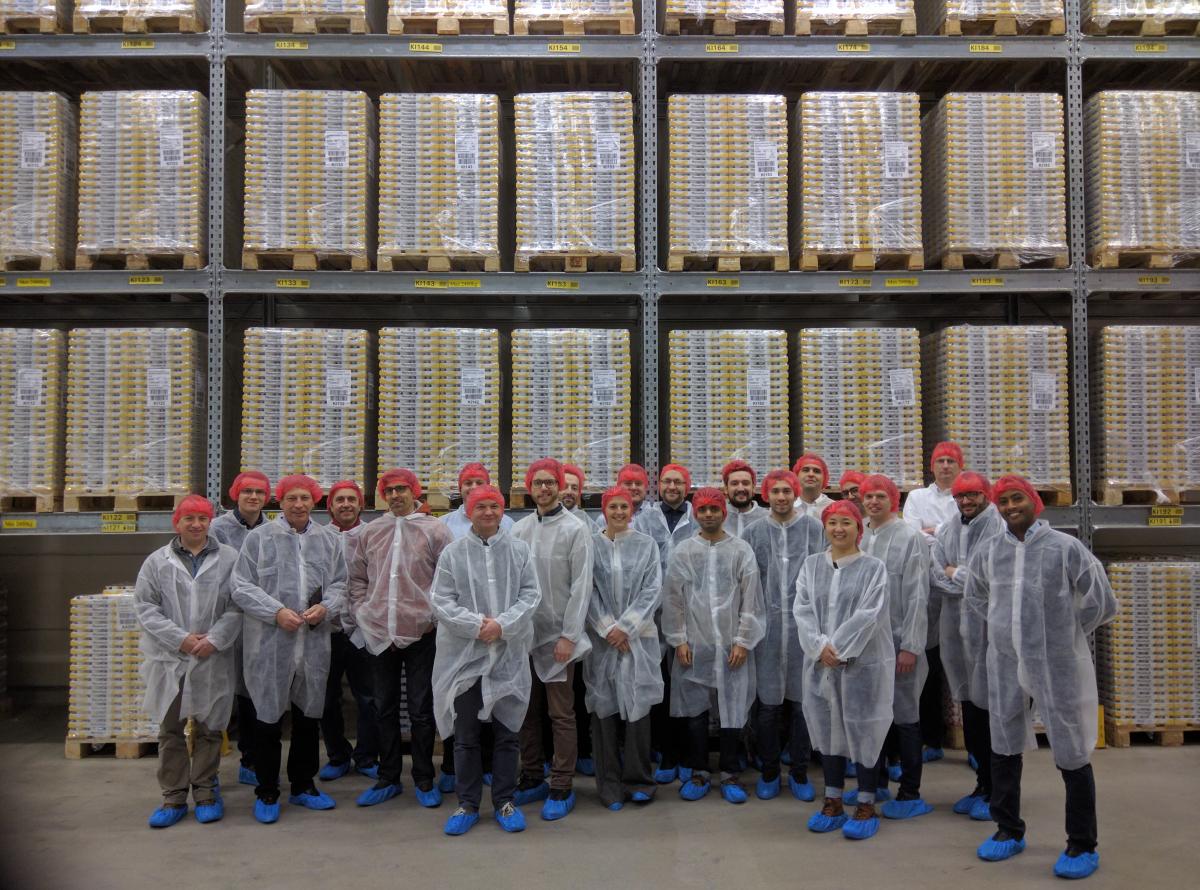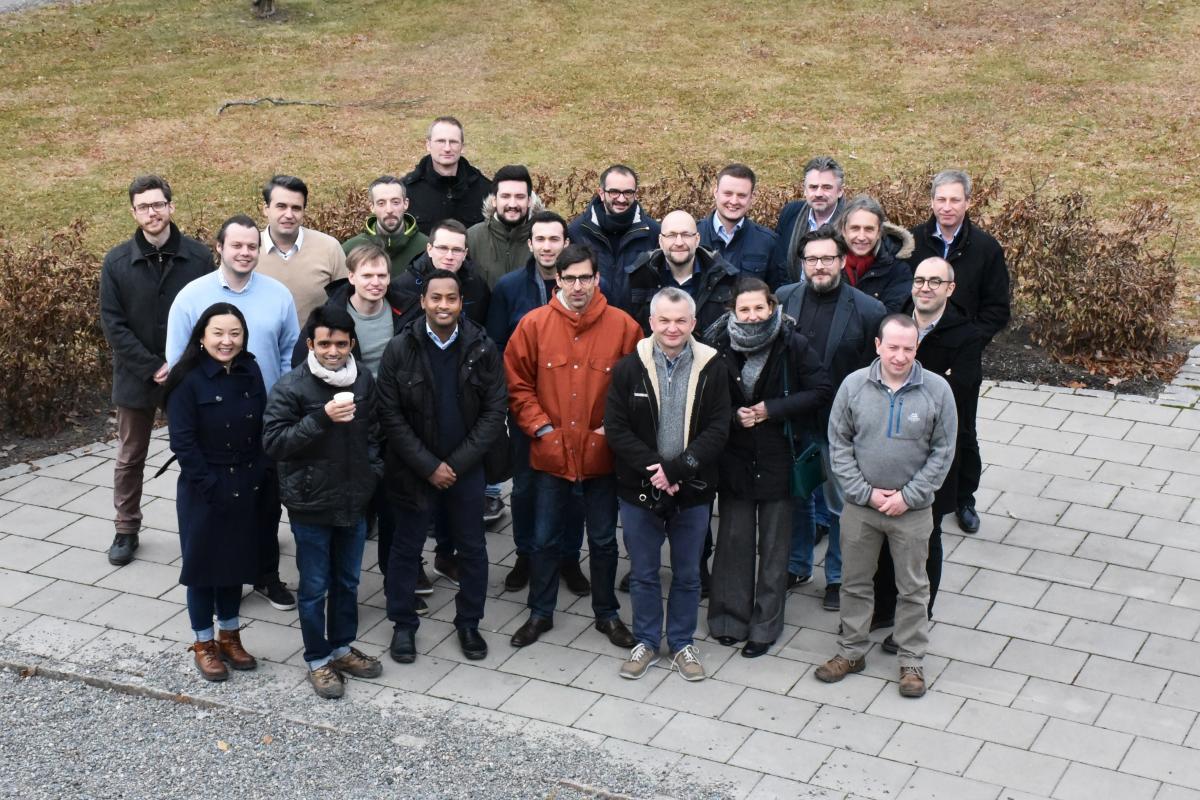The goal of the EU H2020 project ILIAD was to develop robotic solutions that can integrate with current warehouse facilities, extending the state of the art to achieve self-deploying fleets of heterogeneous robots in multiple-actor systems, life-long self-optimisation, efficient and safe operation in environments shared with humans, and efficient fleet management with formal guarantees.
Scientifically, ILIAD strived to overcome limitations in the state of the art in detecting, tracking and analysing humans; quantifying map quality and predicting future states depending on activity patterns inferred from long-term observations; planning of socially normative movements using learned human models; integration of task allocation, coordination and motion planning for heterogeneous robot fleets; and systematically studying human safety in mixed environments.
I was responsible for making the ILIAD robot fleet, equipped with a heterogeneous set of sensors and compute hardware, aware of humans by developing and deploying state-of-the-art, multimodal 2D and 3D human detection and tracking approaches on resource-constrained hardware.
